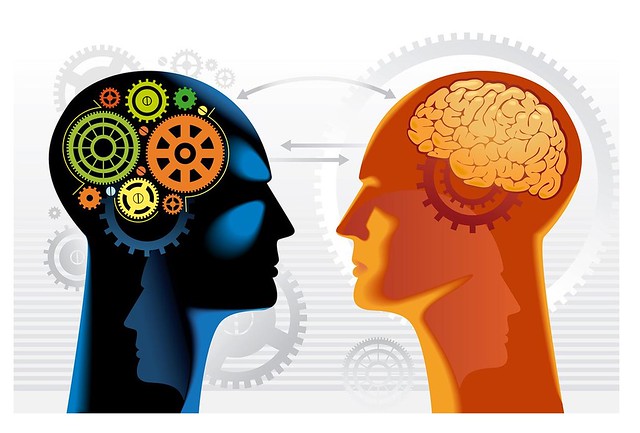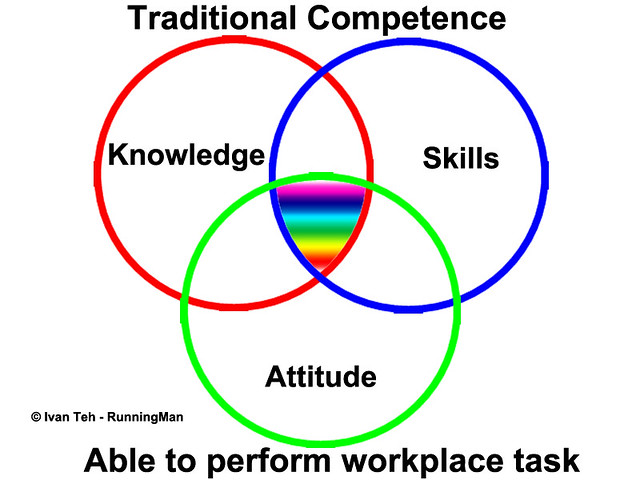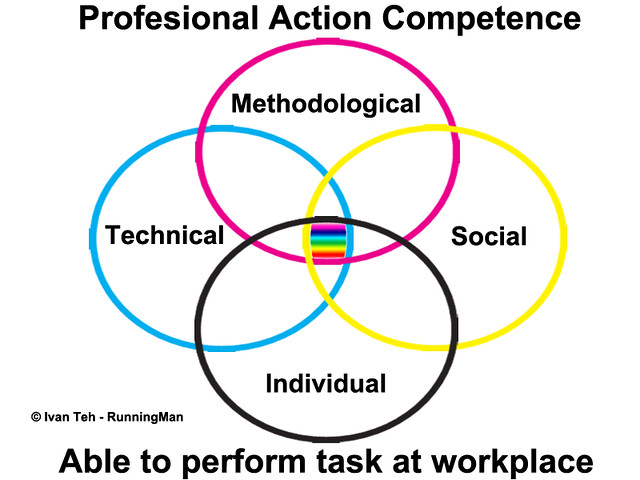Professional Action Competency Model
Written & Researched by: Ivan Teh RunningMan
Simply put, a competency model is a framework which describes what people need to know and be able to do, in order to carry out their responsibilities effectively in their jobs. For companies, a well implemented competency model enables them to align employees’ performance with the overall business strategy.
 |
| Source Credits |
Traditionally, competency has largely been accepted as a collection of Knowledge, Skills, and Attitudes (KSA), which are relevant to the specified job scope. If a person were to have the required combination of KSA, they are deemed to be competent, able to perform the workplace task(s) required of them. By and large, this definition, while still relevant, is rather narrow and limited in scope in today's world.
 |
| Competence Traditional |
Other competency models have built upon this foundation, including the Professional Action Competency Model. Developed by Prof. Dr. Rudolf Tippelt & Antonio Amoros, the Professional Action Competency Model adopts the German concept of "Handlungskompetenz", which is defined as a self-dependent skilled worker who is quick and flexible in adapting to new situations at work. According to this model, competency is defined through action.
There are 4 distinct dimensions to the Professional Action Competency Model. If a person were deemed competent under this model, more than being able to perform the workplace task(s) required of them, they are also able to perfom task(s) at the workplace beyond their regular scope.
 |
| Competence Professional Action |
Technical Competency: Refers to the knowledge and skills required for the job. The worker is able to carry out activities and tasks in their field in a professional, competent, and responsible manner.
Methodological Competency: Refers to the ability to process information and respond with appropriate procedures on the job. The worker is able to react competently to either existing or new situations, and find solutions independently.
Social Competency: Refers to the ability to communicate and collaborate with others on the job. The worker is able to competently demonstrate teamwork, inter-personal understanding, and the ability to work with superiors, subordinates, and peers.
Individual Competency: Refers to the attitudes of the worker towards the job. The worker is able to competently practise self-reflection for improvement, seeks continual learning, demonstrates positive behaviours at work, plans ahead, and is also a well-rounded individual outside of work.
Several principles of competency based training are evident in this model. It is Holistic, with a broad definition of competency that encompasses more than outcomes; it is Adaptable, as workers are equipped to respond to changes in the workplace; it is Learner-Centric, as it recognises that an individual can play many roles; and it is Contextualised, as it allows considerations on how the larger work environment may affect learning.
In the Professional Action Competency Model approach to compentency based training, the competent worker is skilled, self-organised, flexible in adapting to situations quickly, plans ahead, works well within his / her organisational structures, and ensure his / her own continual learning. These are relevant, vital traits workers should possess in the workplace of the modern world.
.....
Source Attributions:
Melissa Noonan, "Competency Models – What Are They Anyhow and What’s the Big Deal?", published by St. Charles Consulting Group, June 2012. Retrieved 01 July 2016, from http://stccg.com/competency-models-what-are-they/.
Prof. Dr. Rudolf Tippelt & Antonio Amoros, "Competency-Based Training - Compilation Of Seminar Subject Matter: Training The Trainers", published by InWEnt - Capacity Building International (Internationale Weiterbildung und Entwicklung gGmbH), November 2003. Retrieved 01 July 2016, from https://wdae.files.wordpress.com/2012/05/1_competency_based_training.pdf.
.....


CONVERSATION